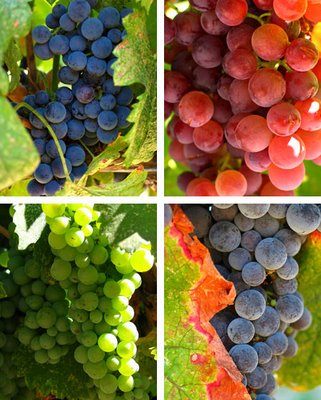Every drink has its own followers and they call that drink “Aqua Vitae“– Water of life.
In the early ages, all alcoholic liquid was referred to as Aqua Vitae (Latin name for water of life). The distilled or fermented liquid used to be generally produced from grapes and grains (wheat or barley). The former used to be primarily distilled, which is now known as brandy and then came wine which was a fabulous from fermentation. Now what is Wine? To express it in a layman’s term, wine is nothing but a grape juice obtained by fermenting freshly gathered grapes. It later goes through various mechanical treatments, before being finally bottled. And hence, wine is quite simply the most complex, most varied and arguably the most sensational drink on the planet.

I was astonished to hear for the first time that, there are more than 10,000 wine grape varieties worldwide. Puzzled with the thought, I desperately wanted to know, how many of them actually make it to the bottles? The fact is, only a few hundreds of them have gained fame and recognition for their spectacular finesse and aromas. Grapes like Cabernet Sauvignon, Merlot, Pinot Noir, Shiraz, Grenache, Sangiovese, Tempranillo etc., have found international recognition worldwide for red wines and white varietals like Chardonnay, Sauvignon Blanc, Riesling, Viognier, Muscat etc., have charmed your palate with its crisp and refreshing fruity finish. So probably, the next time when you drink your favourite wine and somebody questions you, “What are the styles of wines you’ve tried so far?” Well, as an amateur drinker, you might be aware that there are only 2 types of wines, Red and White. By not questioning your judgement as an amateur wine drinker, who has not yet reached the stage to understand the classifications more precisely. However, it is always an advantage to remember the right classification. Easily said, there are 3 ways in which the wines are classified. To begin with - table or still wines, which are divided further into Red, White and Rosé, depending on the winemaker’s decision to make it dry or sweet. Secondly, the famous and most loved champagnes which are known as sparkling wines. Finally, the sweet and fortified wines like Port and Sherries which are being fortified by the addition of alcohol.
Not forgetting the temperatures. An important concern for whatsoever wine it may be. Let’s just say; are you going to enjoy your beer if it is served at a room temperature? Of course not! (At least not me). The fact is serving wine at right temperature is as important as expecting your meal to be served hot. It is because of this reason, that the whole effort which goes into winemaking is enjoyed at the table. It brings up the whole characteristics of a good wine and helps you appreciate it to the fullest.

Listed below are the right serving temperatures of wines:-
1) White wines – 7°- 10° Celsius.
2) Red wines – 18° - 21° Celsius.
3) Sparkling wines (Champagne) – 5° - 8° Celsius
4) Rose wines – 7° - 13° Celsius.
5) Fortified wines - 13° - 20° Celsius
Simply speaking, the above guidelines are just to help you understand and enhance your wine drinking experience with a better approach. What’s more important is how well you practise your “ethics” by applying these guidelines. - Agnel Gilbert

No comments:
Post a Comment